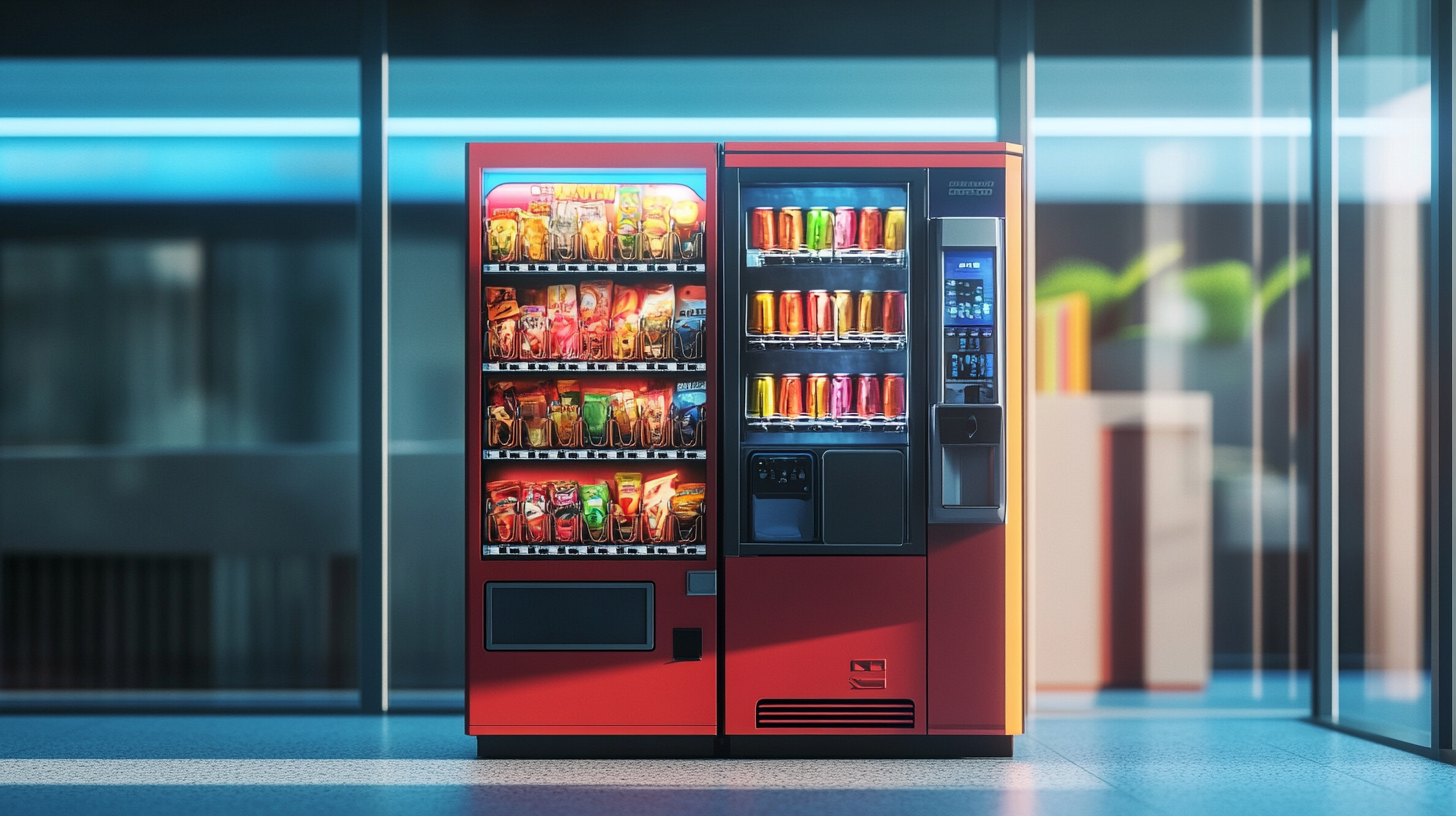Innovative Ideas for Stocking Your Vending Machine Items
The vending machine industry has evolved significantly over the past decade, with the market projected to reach $25 billion by 2028. As consumers increasingly seek convenience and on-the-go solutions, the demand for innovative vending machine items continues to rise. According to a recent study by the National Automatic Merchandising Association (NAMA), nearly 79% of consumers report that they prefer purchasing snacks and beverages from vending machines that offer healthier options. This shift emphasizes the necessity for operators to adapt their product offerings to meet changing consumer preferences.
Incorporating unique and appealing items into vending machines can not only attract more customers but also enhance the overall user experience. Featuring a diverse range of vending machine items—including plant-based snacks, gourmet beverages, and functional foods—can help operators stay competitive in an ever-evolving marketplace. With the right mix of innovation and consumer savvy, vending machine businesses can capitalize on this upward trend and explore new possibilities while meeting the demands of modern consumers.

Exploring the Rise in Healthy Snack Demand in Vending Machines
The demand for healthy snacks in vending machines has been on the rise, paralleling a broader shift in consumer preferences towards more nutritious eating options. As Yashvardhan Goel, Managing Director of NFP Sampoorna Foods, highlights, this trend is primarily driven by a growing awareness of health and wellness among consumers. Vending machines, traditionally associated with sugary treats and processed foods, are evolving to cater to this healthy snack revolution. Operators are increasingly stocking items like protein bars, dried fruits, and low-calorie snacks, responding to a market that is hungry for better options. Moreover, the vending machine industry itself is lucrative, generating over $6 billion annually, making it an appealing venture for entrepreneurs. The convergence of health-conscious consumer behavior and the financial attractiveness of the vending machine business presents a unique opportunity. With reports indicating that the foodservice market in the US is set to expand significantly due to increased snacking habits, now is the perfect time for vending machine operators to innovate. By incorporating smart technology and AI-driven insights, they can not only streamline their operations but also tailor their offerings to meet the precise demands of health-oriented consumers. Catering to this shift doesn't just enhance consumer satisfaction; it also aligns with broader societal trends towards healthier lifestyles. As schools face challenges in maintaining canteen operations, turning to vending machines stocked with nutritious choices offers a sustainable solution. This approach not only caters to the evolving preferences of students but also supports the growing emphasis on health in educational environments. With the right mix of innovative healthy snacks, vending machines have the potential to redefine convenience while promoting better eating habits.

Integrating Local and Organic Products to Enhance Vending Machine Appeal
As consumers become increasingly health-conscious and environmentally aware, vending machines are no longer limited to sugary snacks and carbonated drinks. By integrating local and organic products into vending machine offerings, operators can significantly enhance their appeal while catering to the evolving preferences of consumers. This shift not only boosts sales potential but also supports local economies and sustainable practices.
One innovative approach is to partner with local farmers and artisans to create a dynamic inventory of fresh, seasonal products. Items such as organic fruit, vegetable chips, and locally sourced granola bars not only provide healthier alternatives but also promote regional foods that consumers are eager to support. By showcasing these local products, vending machines can offer a taste of the community while encouraging customers to make more mindful food choices.
Additionally, offering organic beverages such as natural teas and cold-pressed juices can further elevate the vending experience. Wildly popular among health enthusiasts, these drink options cater to those seeking refreshing, nourishing alternatives to traditional sodas. Implementing clear labeling that highlights organic certifications and local sourcing can also enhance transparency, helping consumers feel confident in their choices.
By embracing local and organic products, vending machines can redefine their role within both workplaces and public spaces. This strategy not only meets the growing demand for healthier snacks but also aligns with the community-focused values of many modern consumers. As vending machines evolve, their potential to inspire healthier lifestyles and support local economies becomes boundless.

Tech Innovations: Smart Vending Machines and Their Impact on Consumer Choice
The evolution of vending machines has seen a remarkable integration of technology, resulting in smarter machines that significantly influence consumer choice. According to a report by Allied Market Research, the global smart vending machine market is projected to reach $9.5 billion by 2026, growing at a compound annual growth rate (CAGR) of 8.5% from 2019 to 2026. This surge is driven by innovations in digital payment systems, artificial intelligence, and IoT connectivity, which enhance the user experience and streamline operations.
Smart vending machines now offer advanced features, such as touchless payments and real-time inventory management, allowing operators to track sales and stock levels efficiently. Research from Juniper Networks indicates that vending machines equipped with mobile payment options see a transaction increase of up to 30%. This convenience not only appeals to tech-savvy consumers but also meets their demand for contactless solutions in a post-pandemic world.
Moreover, the ability to personalize product offerings through data analytics enables vending operators to cater to consumer preferences better. According to a study by the National Automatic Merchandising Association (NAMA), nearly 70% of consumers express interest in vending machine experiences that adapt to their buying habits. This indicates a shift from traditional vending approaches to a more consumer-centric model, as operators leverage data to stock items that resonate with their target demographics.

Understanding Consumer Trends: What Data Says About Vending Item Preferences
Understanding consumer trends is crucial for effectively stocking vending machines and maximizing sales. According to the National Automatic Merchandising Association (NAMA), around 67% of consumers prefer healthier snack options over traditional junk food. This shift in preference has spurred vending operators to incorporate a broader range of items, including organic snacks, low-calorie options, and gluten-free products. As consumers become more health-conscious, offering items like protein bars, nuts, and dried fruit is no longer just beneficial—it's necessary.
Moreover, recent data from the Office of National Statistics indicates that 74% of consumers are looking for convenience in their shopping experience. Vending machines that offer ready-to-eat meals or beverages have seen a significant uptick in demand. Features like contactless payment and mobile app integration further enhance convenience, appealing to tech-savvy consumers. By stocking fresh sandwiches, salads, and a variety of beverage options, vendors can attract customers who are on the go and prefer quick, hassle-free dining solutions.
Additionally, younger consumers, particularly Millennials and Gen Z, are driving trends towards sustainability and ethical sourcing. Research by Mintel reveals that 51% of Gen Z shoppers are actively seeking products that are environmentally friendly. Vending machine operators can capitalize on this trend by offering products from sustainable brands or those that utilize recyclable packaging. Incorporating such items not only satisfies consumer preferences but also promotes brand loyalty among socially conscious demographics.
Maximizing Profit Margins: Pricing Strategies in the Vending Machine Industry
In the vending machine industry, effective pricing strategies are pivotal for maximizing profit margins. With the growing competition from grocery stores and online retailers, understanding the psychological aspects of pricing can provide an edge. Research indicates that 70% of consumers are influenced by pricing in their purchasing decisions. Thus, vending operators must implement dynamic pricing models that reflect the real-time demand and consumer behavior, much like those used in other retail sectors. By analyzing purchasing patterns and peak hours, operators can adjust prices to enhance sales during high traffic times, attracting price-sensitive customers without alienating loyal ones.
Moreover, product placement plays a crucial role in conjunction with pricing strategies. A well-placed vending machine in a high-traffic area can increase visibility and ultimately drive sales. Studies show that strategic placement can increase sales by up to 25%. Allied with competitive pricing, these factors create a compelling offering that entices consumers. Tracking performance metrics can aid operators in fine-tuning both placement and pricing efforts, ensuring they address market fluctuations effectively.
In this ever-evolving landscape, adapting to consumer preferences is key. Regulatory policies further complicate pricing strategies, demanding a flexible approach that aligns with legal frameworks while still aiming for profitability. Companies must remain vigilant and responsive, employing data-driven insights to stay ahead in the competitive vending machine sector. Emphasizing a balance between strategic pricing, ideal placement, and regulatory compliance will cultivate an environment conducive to sustainable profit growth.
